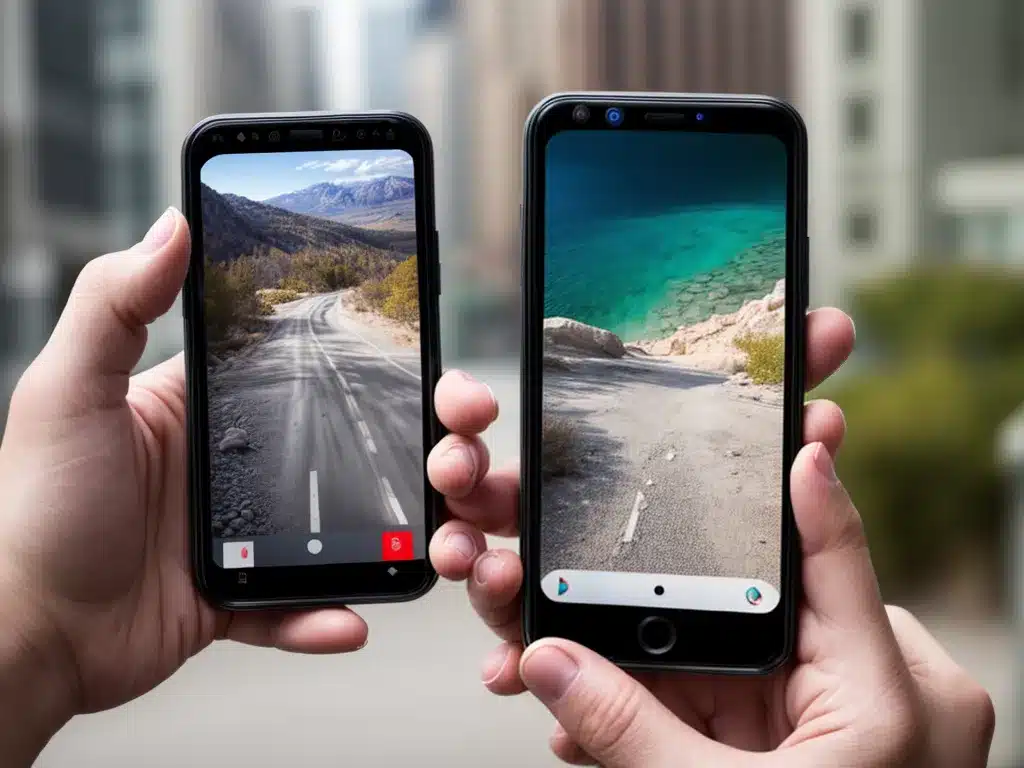Improved Sensors and Lenses
One of the biggest changes I expect to see in smartphone cameras this year is the introduction of larger image sensors and improved lenses. Larger sensors allow more light to be captured, resulting in better low-light performance and improved dynamic range. Paired with faster lenses with wider apertures, 2023 flagship smartphones should capture much more detail in challenging lighting conditions.
Brands like Samsung and Sony are leading the way with cutting-edge sensor technology, while companies like Apple are likely to adopt improved sensors and lenses to catch up to the competition. The latest generation of smartphone cameras can already compete with entry-level mirrorless and DSLR cameras. Further improvements to the hardware this year could push the boundaries even more.
I anticipate 1-inch or larger sensors becoming commonplace in premium devices, allowing for photography capabilities not possible with the smaller sensors used today. Larger pixels and advances in computational photography will also help extract the most out of these high-end camera components.
New Computational Photography Techniques
In addition to better sensors and lenses, I expect the image processing and computational photography capabilities of smartphones to take a big leap forward in 2023. Companies are investing heavily in machine learning and artificial intelligence to enhance photos through advanced processing.
Techniques like multi-frame noise reduction, semantic segmentation, and generative adversarial networks will become more widespread. Multiple exposures can be captured almost instantly and merged with AI to reduce noise and increase detail. Algorithms can better understand the subjects in a scene to apply selective adjustments. Powerful AI models can be used to increase resolution or realistically add shallow depth of field to standard single-lens phone cameras.
Brands like Google, Apple, and Huawei have been at the forefront of developing these computational photography tools. As the hardware improves, software advancements will help smartphones surpass the physical limitations of their small form factors. I expect even mid-range devices to pick up some of these capabilities this year.
New Shooting Modes and Camera Features
In addition to changes under the hood, I anticipate smartphone makers adding new features and shooting modes tailored to the capabilities of the latest camera hardware and processing tech.
For example, functions like night modes, portrait modes, and Pro modes will likely see significant improvements to take advantage of the improved sensors, lenses and AI processing. Manual settings for ISO, shutter speed, white balance, etc. will offer more control over images.
New assisted photography modes could use AI guidance to help novice users frame shots and capture better photos. Video will likely see upgrades like 8K recording, improved stabilization and expanded dynamic range. Augmented reality features may allow users to digitally model scenarios before capturing them.
Overall, I foresee smartphones embracing their role as the primary cameras for most consumers. More ways to leverage these pocket-sized creative tools will change how we capture and share moments in everyday life.
Conclusion
With impressive advances in camera hardware and computational photography, 2023 is shaping up to be a landmark year for smartphone photography. I’m excited to see brands push the limits of what’s possible with tiny smartphone lenses and sensors. Paired with powerful software and AI processing advancements, the smartphone may replace traditional cameras for many more users this year. As an avid mobile photographer myself, I can’t wait to try out the imaging capabilities of the next generation of phones. It’s an exciting time for smartphone cameras!













